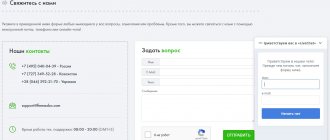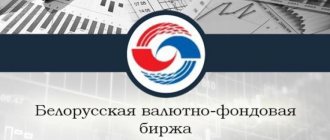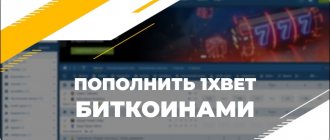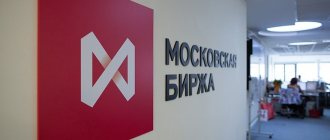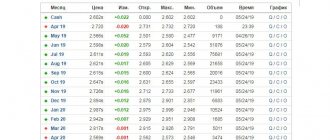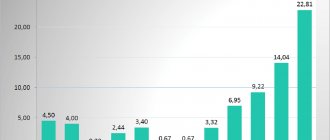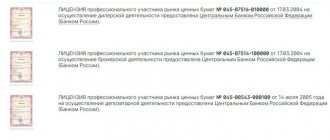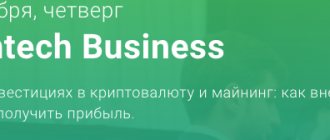About the exchange
| Country and site | USA, NYMEX Division |
| Year founded and owner | 1872, Chicago Mercantile Exchange (CME) |
| Number of assets traded (excluding COMEX) | 3 groups, 116 contracts |
| Capitalization | $11 billion (2016) |
| Indices (GLOBEX) | S&P500, DJI, Nasdaq-100, Russell 2000 |
| Official site | https://www.cmegroup.com |
| Work schedule and duration of sessions according to MSK | From 2:00 to 1:00 the next day. Work days. Winter time USA. |
New York Mercantile Exchange opening hours
The New York Mercantile Exchange is open every day of the week except Sunday , from 6:00 to 17:15 local time (GMT-4).
Sincerely, wiki Masterforex-V, free (school) and professional training courses Masterforex-V for working on Forex, stock, futures, commodity and cryptocurrency exchanges.
History of the exchange
In 1872, American farmers created an exchange for trading agricultural products (milk, butter, cheese). The project turned out to be successful, the product line expanded, and other products were added to food products.
In 1974, derivative instruments were launched on the stock exchange. Constant experiments were carried out with new futures. What was important was the interest of traders in them, and as a result, the liquidity of American contracts.
Michel Marks was chairman of NYMEX from 1978 to 1987. Together with economist Arnold Seifer, he invented and launched energy derivatives on the stock exchange. The first was fuel oil futures in 1978. The area has developed rapidly; today the main global volume of derivatives for petroleum products and crude oil comes from the American NYMEX.
In 1994, it merged with the COMEX, which has a 60-year history. Since the merger, both exchanges have existed as two trading divisions within NYMEX Holdings Inc. The main difference is in the specialization of traded contracts:
- NYMEX is energy resources, platinum, palladium, agricultural products.
- COMEX - gold, silver, aluminum, copper.
In 2006, NYMEX and the Chicago Mercantile Exchange (CME) agreed to make contracts available for trading around the clock on the CME's electronic GLOBEX system. In 2008, the Chicago Stock Exchange absorbed the NYMEX. A single market of trading platforms has emerged.
EREPORT.RU
The New York Mercantile Exchange was created in 1872 to organize a civilized commodity market in New York and standardize the terms of contracts. Until 1882 it was called the Butter, Cheese and Egg Exchange. Over the years, the specialization of the exchange has changed and now it is the world's largest trading center for energy resources and metals.
There are two divisions on the exchange: - NYMEX on which all energy resources are traded (oil, gasoline, fuel oil, natural gas, electricity, etc.), as well as platinum and palladium, and COMEX (commodity exchange) where other metals (gold, silver, copper, aluminum) NYMEX also organizes trading in mini contracts - NYMEX miNY. The electronic version contains most of the exchange’s instruments, which gives small investors and traders the opportunity to be present on the energy market.
The New York Mercantile Exchange has its own clearing center, which acts as a counterparty to trading transactions, which guarantees against the risk of default. The transaction guarantee mechanism is very important in the structure of exchange trading. The daily deposit of our oil and gas trading platform is $20 billion. These funds are intended to be paid in variation margin. Insurance fund - $200 million.
The NYMEX clearing system can, to one degree or another, be transferred to the newly created commodity and raw materials exchange in St. Petersburg, which, according to the plans of the Russian government, will become one of the largest exchange platforms for oil transactions by the end of 2007.
NYMEX Incorporation Plans
The New York Mercantile Exchange announced plans for corporatization in July 2006. In documents filed with the US Securities and Exchange Commission, it said it plans to make an initial public offering on the New York Stock Exchange. The size of the issue was not disclosed in the application. It is only known that during the IPO, the world's largest trading platform for wholesale commodities, created 132 years ago by Manhattan dairymen to sell dairy products, intends to receive about $250 million and list its shares under the symbol NMX.
According to experts, the initial placement of Nymex may be completed at the end of September. “Given the current sky-high energy prices, there could be no better time to go public,” said Harrell Smith of consulting firm Celent. In the first quarter of this year, Nymex reported net revenues of $33.6 million, up $20 million from the same period last year.
The Nymex listing would follow a string of recent successful IPOs from a number of exchanges, including the Chicago Mercantile Exchange, New York Stock Exchange and Nasdaq.
Russian oil trading Rebco
In 2006, the New York Mercantile Exchange launched futures trading in Russian Rebco oil. Trading in Russian oil futures on the NYMEX began on October 23, 2006 at 10 a.m. local time, when the first Rebco quotes appeared. The exchange also plans to follow futures contracts by opening options trading in Russian Rebco oil within a few months.
“At NYMEX, the volume of crude oil transactions increases annually by 20%, this is a good background considering that Russia is one of the largest suppliers of oil to the world market. The entry of Russian oil onto our exchange and the transition to transparent pricing is a strong signal for the market,” said Daniel Brusstar, director of the exchange’s energy research department.
The bet was placed on the experience of NYMEX because it is the world's largest trading platform for oil and gas contracts, and more than a quarter of a century ago, it was NYMEX that first developed and proposed a system of futures and options contracts to ensure market transparency and risk management.
The average daily volume of crude oil trades on the NYMEX is approximately $350 million. Russia’s entry into the oil exchange market is a very important moment, since the price mechanism of such a large global oil producer should not be formed in an opaque manner. Although some oil-producing countries still prefer behind-the-scenes pricing.
The first REBCO futures contract, up for auction in New York, will be tied to deliveries from the port of Primorsky on the Baltic Sea. The volume of the contract, denominated in dollars and cents, will be 1 thousand barrels.
From 2007, NYMEX will trade oil for rubles
Since the summer of 2007, the New York Mercantile Exchange (NYMEX) intends to carry out settlements on a number of contracts, including the REBCO futures launched in October 2006, in rubles.
Unofficial information about the possible introduction of the ruble as a settlement currency on NYMEX appeared during the launch of trading on REBCO oil futures contracts on the exchange. The official start of futures trading in Russian REBCO (Russian export blend crude oil) oil was given at NYMEX on October 23, 2006. However, since that moment, no transactions on this instrument have been concluded in the CME Globex trading system.
Over time, trading in this contract is planned to be transferred to the oil Russian Fuel and Energy Exchange (RTEB), which is expected to be created in St. Petersburg by the end of 2007. In the future, according to MEDT officials, REBCO may replace Urals oil in the calculation of taxation and export duties, which will be tied to this price indicator.
NYMEX Vice President Robert Levin confirmed that the multi-currency clearing system on NYMEX is expected to be launched in the first half of 2007 - from that moment on NYMEX will be able to quote ruble commodity contracts on the exchange.
At the first stage of the project, NYMEX intends to open the possibility of accepting non-US currencies as collateral for a security deposit (original margin) and as payment for revaluation of a position in accordance with current market prices (mark-to-market settlements). By the summer of 2007, it is expected to “introduce the possibility of transactions carried out not in US currency, but with clearing in US dollars. At later stages, it will be possible to quote and conduct commodity transactions in non-US currencies, including rubles.
Now NYMEX, like other world exchange platforms, conducts settlements for the majority of traded contracts in dollars, and to a lesser extent in euros, pounds and yens. The possibility of ruble payments with dollar clearing theoretically allows Russian companies, after the liberalization of currency legislation in the summer of 2006, to work directly on NYMEX without intermediary structures.
The NYMEX decision is due to the fact that the ruble is becoming an element of international payments. The government is pursuing a policy of liberalizing currency legislation, and full convertibility of the ruble is just around the corner. Starting from January, settlements in rubles on the Forex market will be carried out by the international settlement company Euroclear.
Experts also associate NYMEX's intentions with support for REBCO futures. The contract is still low-liquidity. Only Russian or quasi-Russian market participants work with it; it is still at the “promotion” stage. And Russian participants are comfortable making payments in rubles. However, in the future, international investors will also be interested in this contract. They will also work with the ruble. This is a fairly strong currency and in the future has every chance of becoming one of the world's convertible currencies.
Other articles in the section “Economic organizations”
Structure and functions
Since 1994, it has been structurally operating as an American holding with 2 divisions - NYMEX Division and Comex Division.
NYMEX Exchange Functions:
- ensuring the trade transaction by the parties, liquidity, compliance with the rights of the parties:
- hedging (insurance) of parties in transactions with the underlying asset;
- provision of high-tech services for round-the-clock access to derivatives trading operations.
Online stock price of CME group - owner of the New York Mercantile Exchange (NYMEX)
Shares of the CME group, of which the New York Mercantile Exchange (NYMEX) is part, are traded on the NASDAQ New York exchange, the second largest stock market in the world after the NYSE in terms of capitalization of the securities market. CME group's ticker symbol on NASDAQ is CME.
CME chart courtesy of TradingView
CME group is also listed on the American exchange CBOE (USA) and German exchanges in Stuttgart, Berlin and Munich.
NYMEX Assets
In the asset structure, let's look at the positions of the NYMEX Division. COMEX assets are not included in this list. However, the reader should understand: COMEX is a separate trading platform within the New York Mercantile Exchange.
Today, the assets of the American NYMEX are concentrated in the following areas:
- Energy resources. Ranks first in terms of cash turnover. Includes divisions Natural Gas, Crude Oil, Petrochemicals, Refined Products, Coal, Electricity, Biofuels. Each division has 10 types of trade contracts, 70 in total.
- Agricultural. Contains Grains and Oilseeds, Livestock, Dairy, Lumber, Softs, Biofuels. There are 36 contracts in the group.
- Metals. Includes Precious (Precious Metals), Ferrous (Steel, Iron Ore, Ferrous Scrap), Other (Uranium Ore). 10 contracts.
Trading instruments of the New York Mercantile Exchange
The New York Mercantile Exchange offers futures and options.
NYMEX Market:
- Brent oil, WTI, Canadian heavy blend,
- Natural gas,
- Propane,
- Coal,
- Petrol,
- Fuel oil,
- Gas oil,
- Biofuels,
- Electricity,
- Harmful emissions
- Platinum,
- Palladium,
- Uranus,
- Cocoa,
- Coffee,
- Cotton,
- Cargo transportation.
COMEX Market:
- Gold,
- Silver,
- Aluminum,
- Alumina,
- Copper,
- Steel,
- Zinc.
How the auction works
Trading on the NYMEX is carried out through authorized members who have official status as a commercial hedger, prop trader, institutional user, trader-investor, asset manager.
Opening hours of the American NYMEX: around the clock (Monday-Friday), with an hour break, taking into account the time of electronic trading on Globex.
Trading exchange participants
A total of 261 participants from 35 countries are registered and admitted to trading on the NYMEX exchange. The CME website contains information about market makers and the instruments they support.
This is what the list of market makers for grains and oilseeds looks like - the company, the person responsible for contact, his email and phone number.
To continue the topic, watch this video:
Pros and cons of the NYMEX exchange
For investors and speculators, the NYMEX trading exchange is attractive:
- developed mechanisms for protecting the interests of players;
- high liquidity of most trading contracts;
- choice of derivatives;
- 24/7 access to trading.
The reliability of CME has been proven over decades of operation.
The disadvantages of working from Russia on NYMEX include higher transaction costs relative to the domestic market. Larger commissions, fees for some trading terminals, separate costs when transferring money from Russian banks to a trading account and withdrawing it back.
There is also the problem of opening trading accounts with the NYMEX exchange for Russians with accredited brokers.
How to access stock trading
An intermediary is required to gain access to trading on the American NYMEX.
Possible options for working with a trading exchange:
- In Russia, a broker has a license as a professional market participant. You can check the status on the website of the Central Bank of the Russian Federation. It is convenient when access to trading on the domestic and American markets is provided in one terminal. For example, such as “Finam”, “BCS”.
- Abroad through a subsidiary of Russian brokers.
- Abroad through a foreign broker licensed by an American regulator.
- Through a sub-brokerage account with a Russian broker, which resells the services of a large foreign broker accredited on the American exchange.
The best brokers for buying and investing in shares
Verified foreign brokers
| Name | Rating | pros | Minuses |
| Interactive Brokers | 8/10 | They speak Russian | Subscription fee 10$\month |
| CapTrader | 8/10 | No monthly fee | They only speak English |
| Lightspeed | 7/10 | Low minimum deposit | Imposing services |
| TD Ameritrade | 6.5/10 | Low commissions | Not everyone gets an account |
Caution about BO and Forex
Binary options (BO) are bets on price movements. The name itself contains an algorithm - all or nothing, winning or completely losing the money you bet.
Types of binary options:
- Call (buy) and Put (sell). The simplest and most popular way of taking money from the population. All you need to do is predict the direction of the price, up or down.
- Reaching the price level. Before expiration, a bet is placed on guessing the price level - whether it will reach it or not.
- Price movement in the corridor or exit from it. The upper and lower prices of the corridor and the expiration time are determined. If the price touches these boundaries, the bet is lost.
BO in the Russian market is pure trading roulette, which has nothing to do with the stock market or the standard derivatives market. This is a breeding ground for fraud.
In a number of countries they are prohibited, in others they are under special attention of regulatory authorities. The US Securities and Exchange Commission (SEC) has issued a warning describing the fraudulent schemes.
ForEx is an international interbank currency exchange market. The volume of a typical trade transaction is from several million dollars. Holes in the legislation of our country allow the existence of companies speculating on this topic.
For a private person, Forex is an over-the-counter market where there is either no legal regulation by the state or it is limited. When concluding a trading agreement with a Forex dealer, you must understand that you bear great risks as a non-professional market participant.
Large universal exchanges of the world
A universal exchange is a stock, commodity and currency exchange rolled into one.
- Moscow Exchange MOEX (formerly RTS and MICEX),
- Istanbul Stock Exchange (Borsa Istanbul, BIST),
- Hong Kong Exchange (HKE),
- Singapore Exchange (SGX),
- Australian Securities Exchange (ASX),
- Taiwan Stock Exchange (TWSE),
- Malaysian Exchange (Kuala Lumpur Futures Exchange, KLSE).
Trading indices
Quotes from TradingView
American trading indices are on everyone's lips.
The Globex electronic trading platform provides the opportunity to trade the following futures on trading indices:
- Index of five hundred US companies with the largest capitalization S&P 500. Ticker SP. The cost is determined by the formula 250xS&P 500.
- Mini futures for American indices S&P 500 (ES), Dow Jones (YM), Nasdaq-100 (NQ), Russel-2000 (RTY)
- Japanese indices Nikkei (NIY) and TOPIX (TPY).
Prospects for investing in these indices
The constant long-term growth of American indices allows you to build trading strategies designed to increase the cost of derivatives.
Let's look at the chart of the S&P500 trading index for 5 years
The trend is generally upward with drawdowns. The advantage for NYMEX traders is high liquidity and protection of the rights of a bona fide investor.
Choosing a broker for trading financial instruments
The widest selection of financial instruments for working in DIFFERENT markets is presented in the TOP - 13 recommended companies of the major league of broker ratings of the Masterforex-V Academy. These are 1. Nord FX, 2. Dukascopy Bank SA, 3. FXPro, 4. Interactive Brokers, 5. Alpari (Alpari), 6. Swissquote Bank SA, 7. OANDA (Oanda), 8. FXCM, 9. Saxo Bank ( Saxo Bank), 10. FOREX.com, 11. FIBO Group, 12. Fort Financial Services (FortFS), 13. Finam (Finam).
According to statistics from our free autocopy rebate service pro-rebate.com, about half of successfully trading traders opened deposits with ]NordFx[/anchor] , which provides
- quotes EUR USD, GBP USD, GBP CHF, GBP AUD, GBP CAD, GBP NZD, CHF JPY, AUD JPY, USD JPY, USD CHF, NZD JPY, USD CAD, NZD USD, AUD USD, USD RUB, EUR RUB, AUD CHF, USD UAH, USD BYN, USD SEK, USD NOK, USD CNY, EUR CHF, EUR JPY, EUR GBP, EUR NZD, EUR AUD, EUR CAD, EUR NOK, EUR SEK, GBP JPY, GBP SEK, GBP NOK and etc.;
- indices S&P 500, Dow Jones 30, DAX 30, NIKKEI 225, FTSE 100, NASDAQ-100;
- 16 cryptocurrencies - BTC, ETH, XRP, LTC, BTG, ETC, EMR, NEO, OMG, EOS, IOT, DSH, ZEC, etc.;
- cryptocurrency indices - 10ALT (10 altcoins per USD), TOP14Crypt (14 cryptocurrencies per US dollar), TOP3ALT (3 altcoins per US dollar), etc.;
- CFD of oil, gold, silver, etc.
- investments in balanced investment portfolios of large global investment funds with trust management (MD) Pro-Industry Fund, Pro-TECH Fund, Pro-Expert Fund and American stocks NYSE and NASDAQ - Intel Corp., Microsoft, McDonald's, Apple, Motorola, Boeing, Alibaba , Nike, Coca-Cola, Visa Inc., PayPal, Google, Facebook, Ferrari, 21 FOX, Pfizer, HP Inc, Jonson & Jonson, Nvidia, Cisco, Electronic Arts, Mastercard, PayPal, Fedex, etc.
- PAMM and RAMM accounts.
The broker provides
- a trading platform familiar to all traders for Meta Trader 4, Meta Trader 5 and Meta Trader 4 Mobile traders with the largest group of built-in indicators and oscillators for technical analysis of forex charts, stock, commodity and cryptocurrency markets;
- minimum trading account from $10 recommended deposit for money management MF from $800-$1000 when trading 0.01 lot)
- leverage from 1:50 to 1:1000;
- All types of trading strategies are allowed, from automated advisors to day trading, swing trading, long-term, medium-term and position trading, scalping, the use of martingale, anti-martingale methods, etc.
- financial regulation CySEC in the EU.
When opening a real trading account from $3000 at NordFx, each trader receives the opportunity to receive free training for 1 year at the Masterforex-V Academy with daily trading tips on a closed forum and on Skype.
